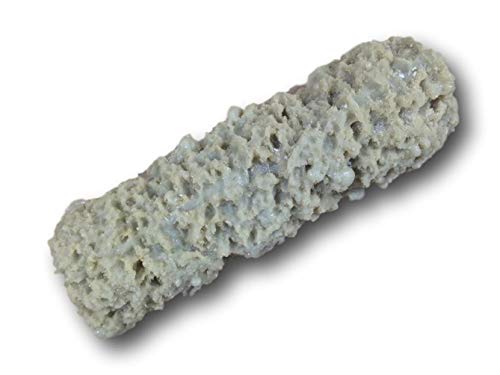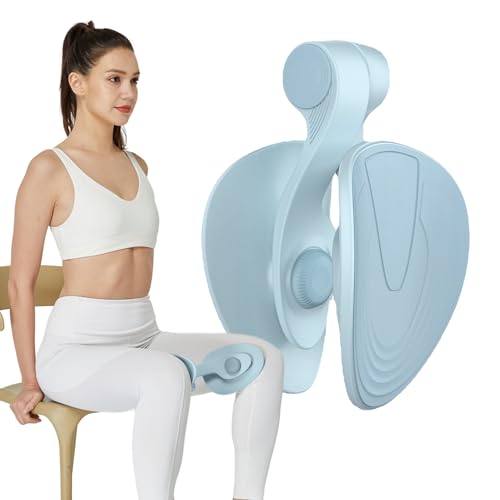I saw an endocrinologist to discuss a variety of issues this past summer. She was
concerned about my use of Protonix 40 mg x 2/day. She said that even using calcium citrate, there are problems with calcium absorption.
This seems like a decent article, from 2011 - does anyone know more recent info?
www.reumatismo.org/index.php/reuma/article/view/reumatismo.2011.5/493
PPI AND BONE FRACTURES
Patients affected by chronic systemic inflammatory or connective tissue diseases i.e. systemic sclerosis, have high frequency of oesophageal mucosal abnormalities and should take long-term PPI therapy.
It has been suggested that an acidic environment in the stomach and upper small bowel is required to free ingested calcium from the food matrix making it available for absorption. Impaired calcium absorption would lead to compensatory physiologic responses, including secondary hyperparathyroidism.
Secondary hyperparathyroidism refers to the increase in circulating levels of parathyroid hormone when serum levels of ionized calcium drop (as would occur with reduced efficiency in intestinal calcium absorption).
Over time, parathyroid hormone would lead to an increase in the rate of skeletal turnover and a reduction in bone mass, both of which increase the risk of fracture (10).
If normal gastric acid production is required for calcium ionization and subsequent absorption, then the millions of individuals using PPIs may be at increased risk for calcium malabsorption, negative calcium balance, and potential bone loss.
Unfortunately, there are no long-term studies on the effects of PPIs on calcium absorption (11).
Today, we have only short-term studies examining the effect of gastric acid suppression on calcium absorption and bone turnover (12-16).
A MEDLINE search was conducted to identify relevant articles regarding PPIs
and fractures (10).
Three case-control studies assessed fractures and PPI use. A study of all subjects with fracture in Denmark in 2000 revealed adjusted OR=1.18 (1.12-1.43) for PPI use within the last year (hip fracture OR=1.45, 1.28-1.65); no dose-response relationship was identified (17).
A study of hip fractures in UK patients ≥50 years found adjusted OR=1.44 (1.30-1.59) for >1 year of PPIs; duration and average daily dose were significantly associated with fracture risk: adjusted OR for >1.75 times average daily dose for >1 year was 2.65 (1.80-3.90) (18).
A study of vertebral, wrist, and hip fractures in Manitoba patients ≥50 years found significant ≥7 years (OR=1.92, 1.16-3.18) (19) risk factor.
Oh, and also from the same article:
concerned about my use of Protonix 40 mg x 2/day. She said that even using calcium citrate, there are problems with calcium absorption.
This seems like a decent article, from 2011 - does anyone know more recent info?
www.reumatismo.org/index.php/reuma/article/view/reumatismo.2011.5/493
PPI AND BONE FRACTURES
Patients affected by chronic systemic inflammatory or connective tissue diseases i.e. systemic sclerosis, have high frequency of oesophageal mucosal abnormalities and should take long-term PPI therapy.
It has been suggested that an acidic environment in the stomach and upper small bowel is required to free ingested calcium from the food matrix making it available for absorption. Impaired calcium absorption would lead to compensatory physiologic responses, including secondary hyperparathyroidism.
Secondary hyperparathyroidism refers to the increase in circulating levels of parathyroid hormone when serum levels of ionized calcium drop (as would occur with reduced efficiency in intestinal calcium absorption).
Over time, parathyroid hormone would lead to an increase in the rate of skeletal turnover and a reduction in bone mass, both of which increase the risk of fracture (10).
If normal gastric acid production is required for calcium ionization and subsequent absorption, then the millions of individuals using PPIs may be at increased risk for calcium malabsorption, negative calcium balance, and potential bone loss.
Unfortunately, there are no long-term studies on the effects of PPIs on calcium absorption (11).
Today, we have only short-term studies examining the effect of gastric acid suppression on calcium absorption and bone turnover (12-16).
A MEDLINE search was conducted to identify relevant articles regarding PPIs
and fractures (10).
Three case-control studies assessed fractures and PPI use. A study of all subjects with fracture in Denmark in 2000 revealed adjusted OR=1.18 (1.12-1.43) for PPI use within the last year (hip fracture OR=1.45, 1.28-1.65); no dose-response relationship was identified (17).
A study of hip fractures in UK patients ≥50 years found adjusted OR=1.44 (1.30-1.59) for >1 year of PPIs; duration and average daily dose were significantly associated with fracture risk: adjusted OR for >1.75 times average daily dose for >1 year was 2.65 (1.80-3.90) (18).
A study of vertebral, wrist, and hip fractures in Manitoba patients ≥50 years found significant ≥7 years (OR=1.92, 1.16-3.18) (19) risk factor.
Oh, and also from the same article:
PPI AND RISK OF CLOSTRIDIUM DIFFICILE INFECTION (CDI)
Clostridium difficile (CD) is a Gram-positive, spore-forming, anaerobic bacillus.
The PPI’s use increases the risk of CDI.
In a case-control study performed on hospitalized patients, PPI use was associated with C. difficile diarrhoea (OR 2.7, 95% confidence interval (CI) 1.4–5.2) and with relapse (OR 5.2, 95% CI 1.1–24.6) (20).
Another study showed that hospitalized patients using PPIs were 4.2-fold more likely to have recurrent disease. This risk was not observed in patients using H2 blockers (21).
Probably, the chronic use of PPIs, reducing gastric acid environment, reduces a natural defense of our organism.
Also in the community PPI use was associated with an increase in CDI (OR 2.9, 95% CI 2.4-3.4) (22).
Recently a retrospective cohort study has been published. It shows a risk of recurrent CDI higher in patients taking PPIs versus patients not exposed to this class of drugs (25.2% vs 18.5%) with a 42% increased risk of recurrence (23).
CDI has been demonstrated to be rarely associated with reactive arthritis, a condition that may develop in response to a gastrointestinal infections usually due to Salmonella, Shigella, Yersinia or Campylobacter (24).
Recently 46 cases in adults have been reported. The sex ratio was close to 1 and the patients were older than those with other causes of reactive arthritis (25).
Clostridium difficile (CD) is a Gram-positive, spore-forming, anaerobic bacillus.
The PPI’s use increases the risk of CDI.
In a case-control study performed on hospitalized patients, PPI use was associated with C. difficile diarrhoea (OR 2.7, 95% confidence interval (CI) 1.4–5.2) and with relapse (OR 5.2, 95% CI 1.1–24.6) (20).
Another study showed that hospitalized patients using PPIs were 4.2-fold more likely to have recurrent disease. This risk was not observed in patients using H2 blockers (21).
Probably, the chronic use of PPIs, reducing gastric acid environment, reduces a natural defense of our organism.
Also in the community PPI use was associated with an increase in CDI (OR 2.9, 95% CI 2.4-3.4) (22).
Recently a retrospective cohort study has been published. It shows a risk of recurrent CDI higher in patients taking PPIs versus patients not exposed to this class of drugs (25.2% vs 18.5%) with a 42% increased risk of recurrence (23).
CDI has been demonstrated to be rarely associated with reactive arthritis, a condition that may develop in response to a gastrointestinal infections usually due to Salmonella, Shigella, Yersinia or Campylobacter (24).
Recently 46 cases in adults have been reported. The sex ratio was close to 1 and the patients were older than those with other causes of reactive arthritis (25).











































